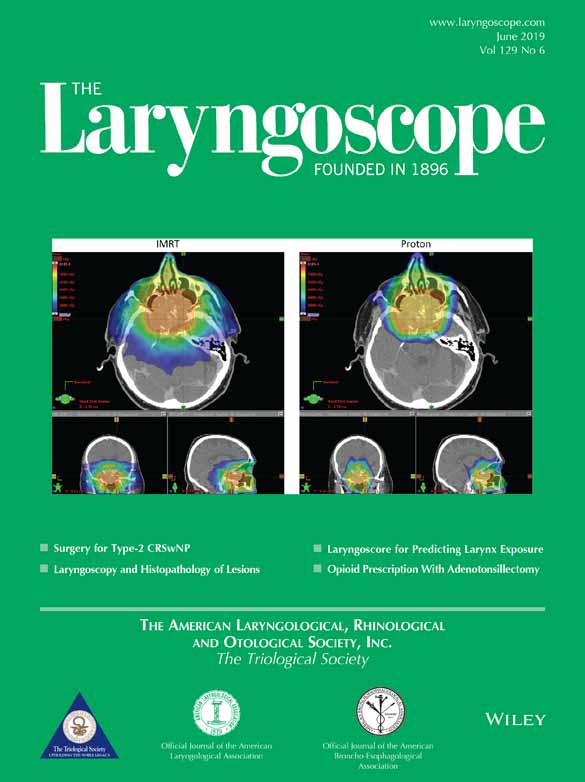The medial sural artery perforator flap: A better option in complex head and neck reconstruction?
Presented as a podium presentation at The Triological Society 2018 Combined Sections Meeting, Scottsdale, Arizona, U.S.A., January 18–20, 2018.
The authors have no funding, financial relationships, or conflicts of interest to disclose.
Abstract
Objectives
The medial sural artery perforator (MSAP) free flap is an uncommonly utilized soft tissue flap in head and neck reconstruction. It is a thin, pliable, fasciocutaneous flap that provides significant pedicle length. The donor site can be closed primarily, and its location is more aesthetically pleasing to patients. We aim to describe the MSAP flap and compare it to other commonly used free flaps in the head and neck.
Study Design
Retrospective case series.
Methods
A retrospective review of all MSAP cases performed at New York University Langone Health was performed from July 2016 to November 2017. We examined the patients’ age, diagnosis, history of prior radiation therapy, and comorbidities, as well as flap-specific information and recipient site.
Results
Twenty-one patients underwent a variety of different head and neck procedures with coverage using an MSAP flap. Recipient sites included tongue, cheek, soft and hard palate, cervical esophagus, and pharynx. Pedicle length ranged from 8 cm to 12 cm. The smallest surface area harvested was 24 cm2 (6 cm × 4 cm), and the largest was 120 cm2 (15 cm × 8 cm). The flaps ranged from 5 to 12 mm in thickness. Venous coupler size ranged from 2.0 to 3.5 mm. Primary closure of the donor site was achieved in 18 of 21 flaps. Twenty of 21 flaps were transferred successfully.
Conclusion
The MSAP flap is a highly versatile and reliable option for a thin, pliable soft tissue flap with a donor site that may be preferable over the radial forearm free flap and anterolateral thigh flap in complex head and neck reconstruction.
Level of Evidence
4
Laryngoscope, 129:1330–1336, 2019




